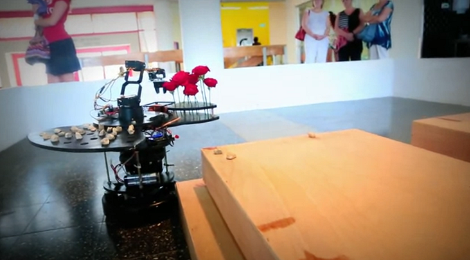Homemade Wall Stops Roomba and Other Vacuum Tricks
If you have a Roomba, you know they are handy. However, they do have a habit of getting into places you’d rather they avoid. You can get virtual walls which are just little IR beacons, but it is certainly possible to roll your own. That’s what [MKme] did and it was surprisingly simple, although it could be the springboard to something more complicated. You can see a video about the build below.
As Arduino projects go, this could hardly be more simple. An IR LED, a resistor and a handfull of code that calls into an IR remote library. If that’s all you wanted, the Arduino is a bit overkill, although it is certainly easy enough and cheap.
We know that’s not much, but we were impressed with some of the other information associated with the project for future directions. For example, there’s this project that adds an ultrasonic sensor to a Roomba using the serial port built under the handle. The interface and protocol for that port is even nicely documented.
That got us thinking. You could probably use some ultrasonic sensors for two-way communication to do custom walls. For example, you could use one to send a set number of pulses per second and have another device on the Roomba to receive them and count. You could program rules like a particular wall is only really a wall between 8 AM and 5 PM, for example.
We’ve seen some people use the Roomba as a general-purpose robot platform. We still wish we could find a sensor in the DigiKey catalog to help avoid this common problem.







